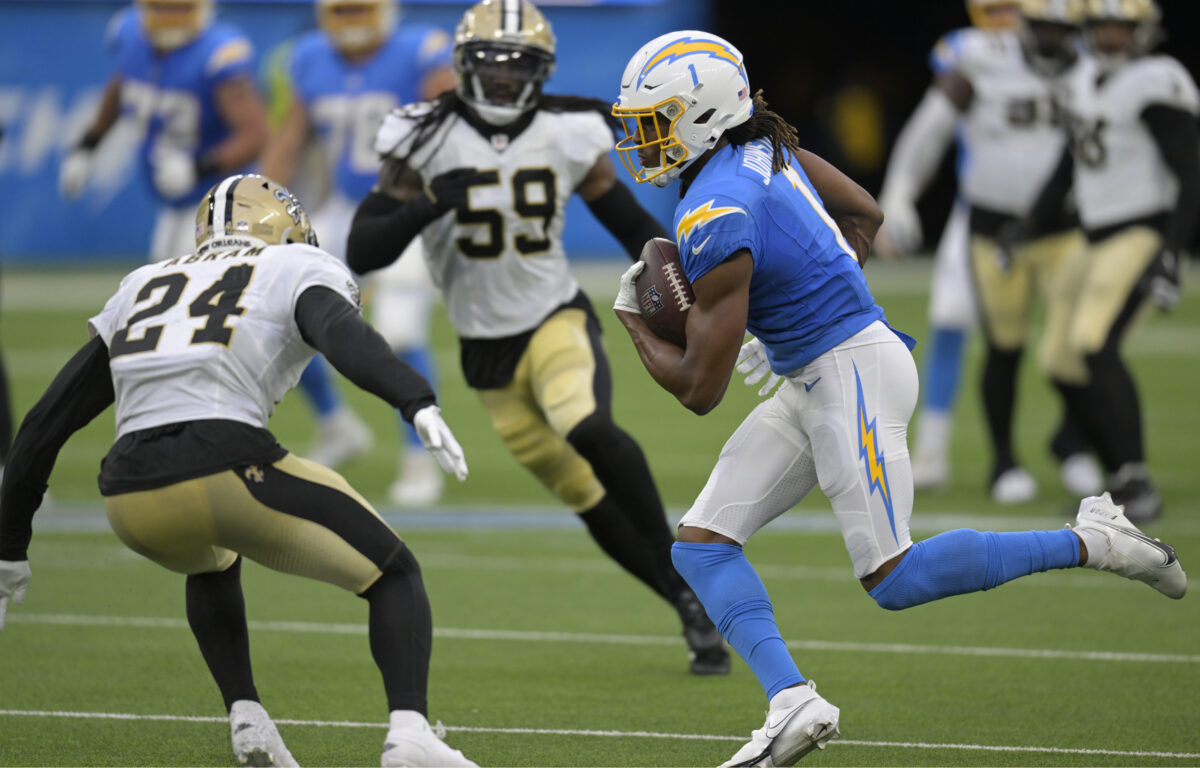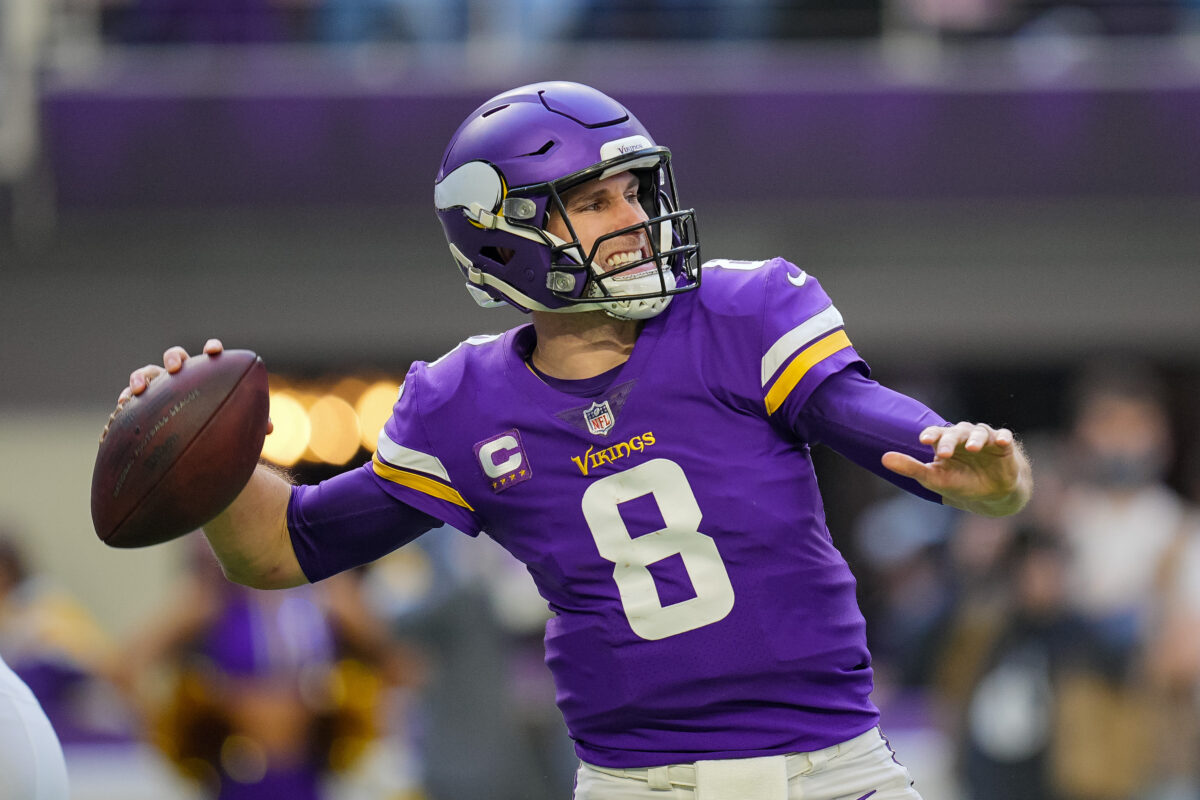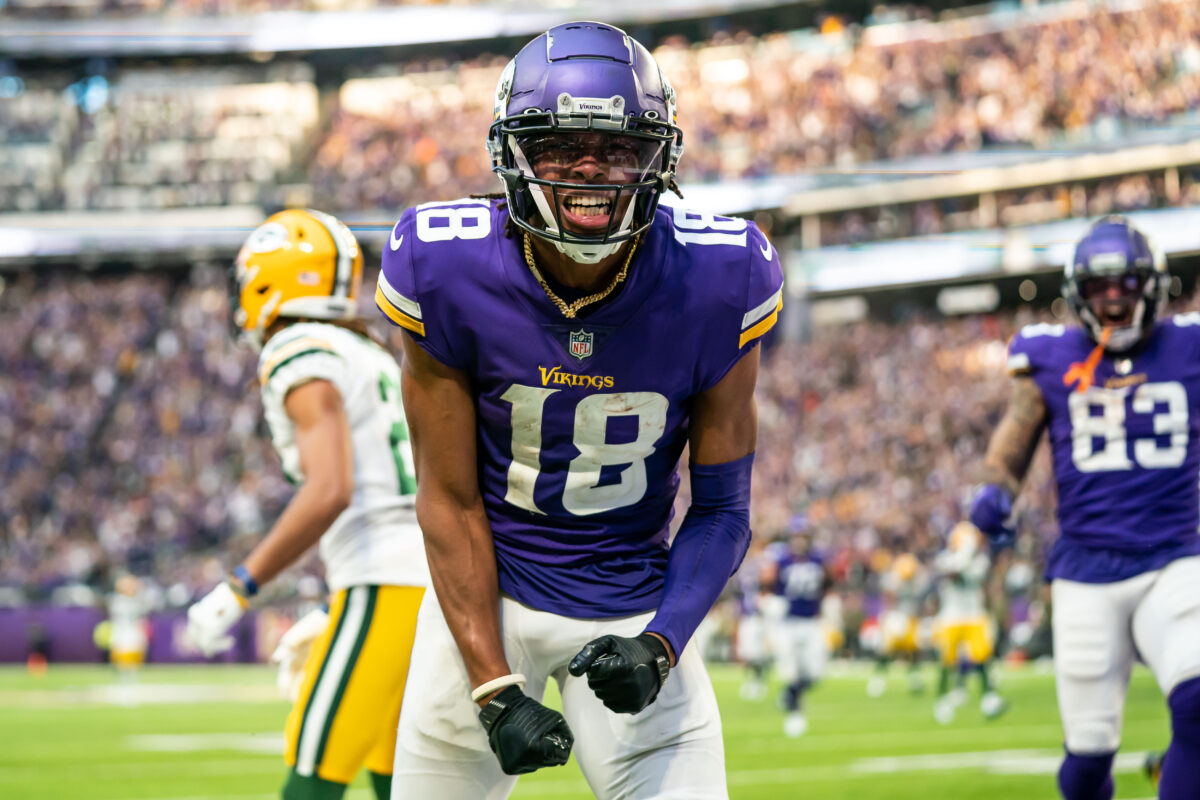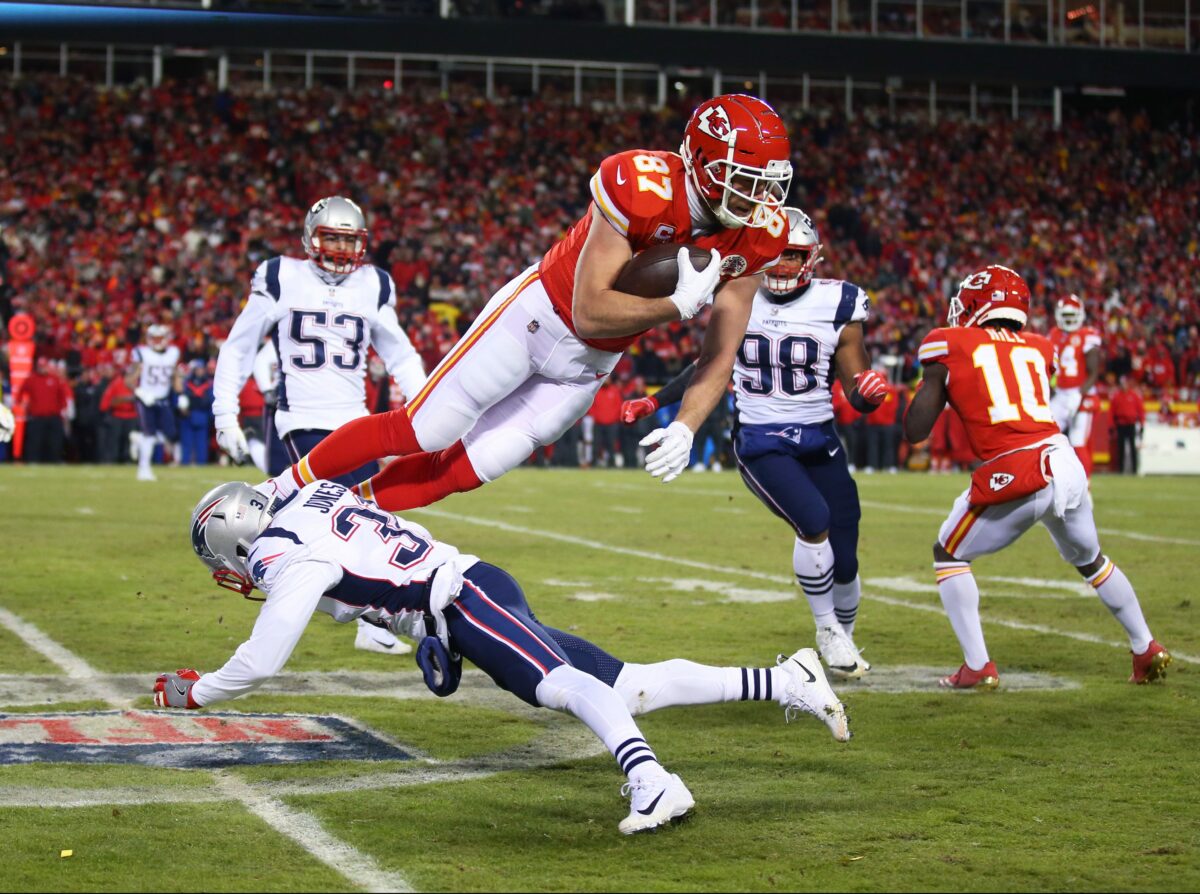This is the companion piece to the 12-team version. The difference between a 10-team and 12-team league is that those two fewer players per position make a big difference the further you get in your draft.
A 10-team league means positional quality lasts longer. Everyone has a “good” team, so you need less depth and more difference-makers. Simply enough, to reach your championship you have to own elite players in their position. Depth matters less – there’s always something on the waiver wire. You are much better off building an optimal starting lineup first and foremost and not playing games with loading up on wideouts or running backs before you’ve reached that best possible lineup.
To follow are the first three-rounds for 10-team fantasy football leagues. They use either standard performance scoring, performance plus a point per reception, or “2QB/Super Flex” leagues where you can start two of any position. Those three formats cover almost all leagues.
The names are less important than the positions because each draft slot has its unique situation. Just as important are your future picks and what you need after three rounds. Rankings can change daily so these may not exactly match rankings.
Reception-point league

This style of scoring boosts the value of wide receivers and elite tight ends and slightly devalues quarterbacks relative to other positions. Running backs are popular in any scoring scenario but the added reception point means the position becomes deeper with third-down backs able to offer “start-able” fantasy value. The consistency of an above-average running back is also a very valuable contributor to the weekly fantasy score.
With a reception point and only ten teams, your roster should look very strong after three picks. All positions are deep in this format so think about “star power.”
Team 1: RB C. McCaffrey, WR Davante Adams, TE Sam LaPorta
The first pick of the draft is also the first pick of the third round – that is always an advantage as talent drains in your draft. McCaffrey is the consensus best pick this year and he’s been as productive and consistent as any player while healthy. That 2-3 turn could be RB10 or WR11 so they opted for Adams at wideout and then took LaPorta which combines as the best running back, best tight end, and a lower-end WR1. Will need at least one running back and wideout in the next three picks but can go anywhere.
Team 2: WR Tyreek Hill, WR DK Metcalf, RB James Cook
Starting with the best wideout is strong in this format, and then doubled up with Metcalf for two Top-10 wideouts. Opted to take Cook as their RB1 and can ignore wideout for many rounds since they likely need just one more to complete their starting requirement. Knowing that running back won’t be a strength, should consider quarterback or tight end immediately to net an advantage and scoop on running backs while paying attention to how late they can still get acceptable quality at their WR3.
Team 3: WR Ja’Marr Chase, RB De’Von Achane, WR Nico Collins
This is an upside sort of plan, taking two wideouts and sandwiching their RB1 of Achane who is boom-or-bust. Will need address RB2 and even RB3 early given the chance of Achane getting hurt. This is a solid start in the format if they all deliver.
Team 4: RB Breece Hall, RB Isiah Pacheco, WR Mike Evans
Pretty standard at this spot to shore up the backfield first with two of the Top-8 and then start to work on wideouts which are deeper in quality. Should consider quarterback and even tight end soon, while seeding their WR2 and WR3 along the way.
Team 5: RB Bijan Robinson, WR Brandon Aiyuk, QB Josh Allen
Middle-round drafters have it tough in the way that there is always a lot of picks between every turn and runs can develop right after they pick. Robinson at RB1 is a healthy choice and Aiyuk was as the ninth wideout was a way to avoid a hole in wideouts. Taking Allen always feels really early (and it is) but he’s been no worse than the No. 2 quarterback for the last four years. Filling one each for the highest-scoring positions means it can be best value for the rest of the draft.
Team 6: WR A. St. Brown, WR Garrett Wilson, RB Kyren Williams
Another middle-of-the-draft pick opts to go WR-WR to start with two of the Top-8 wideouts – always a strength in this scoring. Switched to Kyren Williams for RB1. Even in a 10-team league, getting two running backs from the first five rounds is usually best. Should take their RB2 in the next round or so but can value pick from any position other than wideout that only needs one more decent starter from the deepest position.
Team 7: WR CeeDee Lamb, RB Jonathan Taylor, RB Josh Jacobs
This is actually a solid plan. Snap up a difference-making wideout, then double on running backs for two of the Top-11 in that position. Must have WR2 in the next two picks to maintain quality, but can consider quarterback soon as well. Solid start and can wait on running backs for a while.
Team 8: RB Saquon Barkley, WR Puka Nacua, WR Drake London
This is the reverse of Team 7, where they started with Barkley as the fourth back taken, and then doubled on wideouts to net the WR7 and WR14. That makes a strong set of wideouts though it is the deepest position. Can explore running backs very soon but also consider quarterback and tight end since only need one more starting wideout.
Team 9: WR A.J. Brown, WR Justin Jefferson, RB Derrick Henry
Nearing the end of the first round, very common to double up wideouts and have the WR5 and WR6 – that’s an advantage. Henry at RB1 prevents any weakness and selects again in just two picks. Could reach a great running back like Joe Mixon or Rhamondre Stevenson for their fourth pick for a solid set of starters but needs to consider an earlier quarterback or tight end to gain an advantage somewhere instead of chasing runs.
Team 10: RB Jahmyr Gibbs, RB Travis Etienne, QB Jalen Hurts
Final pick of Round 1 often will double on either wideout or running backs, and they opted wideout which netted the RB5 and RB6. Went with Hurts as the second quarterback selected for a nice advantage but will need to strongly consider wideouts for at least the next two picks if not three.
Performance scoring league

Performance scoring without reception points means that running backs are at a premium, and quarterbacks are a bit more valuable. Wide receivers and tight ends are devalued but still usually provide four starters on a fantasy football team. Most teams will look to get two running backs in their first three picks, and it’s hard to argue against that logic.
Unlike other scoring formats that offer greater parity in fantasy scoring between positions, this one still covets running backs. There could be up to 18 or 20 backs taken over the first three rounds even in this smaller league size.
Team 1: RB Breece Hall, WR CeeDee Lamb, QB Josh Allen
This format makes running backs very valuable and that means while Team 1 got the best running back, the best fifteen are gone by their second pick. Armed with the top back, they abandon the RB-train and get the WR5 and QB1 of the draft. That’s a very strong start but will need to go with at least one more back at their 4-5 wrap-around, even though the value will be low by then. Likely Tony Pollard or Devin Singletary at best.
Team 2: RB Christian McCaffrey, RB R. Stevenson, WR Puka Nacua
After McCaffrey, still went with Stevenson to lock up the backfield. Opted to get the sixth wideout to ensure a no liability at WR1. Can take best available regardless of position for many rounds with that RB-RB start.
Team 3: RB Bijan Robinson, RB Josh Jacobs, WR Justin Jefferson
Same plan as Team 2, RB-RB and then a Top-5 wideout. Nothing splashy with this safe route and the deeper the RB-RB starts in Round 1 means the better back for their RB2. Can pick for value and not need for the next several critical rounds.
Team 4: RB Saquon Barkley, WR A.J. Brown, RB Najee Harris
Leaving the RB2 until their third round netted the fourth-best wideout and still found acceptable value at running back though the quality/risk is on the decline.
Team 5: RB Jonathan Taylor, RB Kenneth Walker III, QB Jalen Hurts
For a mid-round drafter, this plan works admirably in most cases. Takes the standard RB-RB and then opts for the QB2 on the board for an advantage in a high-scoring position. Wideouts will be a disadvantage but their scoring is significantly less in this format. Need to get at least two wideouts over the next four rounds if not three. Smaller league size does make wideouts deeper.
Team 6: WR Tyreek Hill, RB Joe Mixon, RB Rachaad White
Starting out with wideout, even the best one, made the next rounds picks feel like need-picks with running backs and it is somewhat reasonable given that the fourth round is a major step down in quality. Free to value pick the next several rounds and an early quarterback would look good on this roster.
Team 7: RB Jahmyr Gibbs, WR Amon-Ra St. Brown, RB D’Andre Swift
This plan looks solid enough, using Round 2 for a Top-3 wideout and scraping up Swift at RB2. Free to roam the draft board and the strength with their WR1 means they can look at other positions even for three or four rounds if desired. The depth of quality for receivers always last with the smaller league and scoring format.
Team 8: RB Travis Etienne, RB Isiah Pacheco, WR DK Metcalf
More of the same with a very safe and effective start. While he ends up with the seventh-best running back to start, he reached the eleventh-best back in Pacheco to wrap up their backfield. Metcalf was the WR8 from the draft board, so there’s safety in making him the WR1 for the team. Free to choose from here on out.
Team 9: WR Ja’Marr Chase, RB Kyren Williams, TE Sam LaPorta
Drafting at the end of the first round in any sort of league always prompts strategic selections to avoid just following runs and building an average team. Starting with Chase as the second wideout of the draft is a value even in this scoring, and Kyren Williams may be a lower-end RB1 but not a disadvantage. Taking LaPorta in this scoring format doesn’t feel as great, but looking for an advantage in other positions can help make up ground. Probably needs to take running backs in two of the next three rounds.
Team 10: RB Derrick Henry, RB De’Von Achane, WR Nico Collins
This scoring makes the final pick of Round 1 more valuable than any other scoring format because one position – running back – still reigns supreme for the first few rounds and Team 10 owns two Top-8 running backs. Reached Collins for his WR1 and he’s still just the ninth-wideout selected. Can value pick every round now and should consider quarterback in the next few rounds while an advantage still exists in available players.
QB-heavy/Super-Flex league

This league starts two quarterbacks. That pushes value in other positions deeper into the draft since quarterbacks take up far more of the early picks. Each 2QB or super-flex league can use different scoring and other aspects that impact player value, so consider the nuances of your league.
This assumes super-flex, where two quarterbacks may be started. Some leagues may see six or seven quarterbacks in the first round and five or six more in the second round.
It is also assumed that there are reception points. That is by far the most common in that type of league. It is also notable that a team can win without automatically starting two quarterbacks, even when allowed. Virtually no one drafts with that in mind.
In a smaller 10-team league with additional valuable players from the quarterback boost, almost every fantasy team looks great so taking elite players is paramount to winning – get your starters before worrying about depth.
Team 1: QB Josh Allen, QB Brock Purdy, WR Justin Jefferson
The smaller league size helps make this plan for the first pick work well, since quarterbacks are very valuable and that second pick still reached the twelfth quarterback. That’s a nice 1-2 punch paired with Allen. Opted for Jefferson as a Top-5 wideout. Will need to address running back likely with the next two picks but the core is set with those quarterbacks.
Team 2: QB Jalen Hurts, RB Saquon Barkley, WR A.J. Brown
This plan takes the second-best quarterback but then could not resist owning a Top-4 running back and a Top-5 receiver. That’s nice firepower at quarterback, running back and wideout – the three best-scoring positions. That 4-5 turn coming up almost has to take a quarterback and by then it’ll be Bryce Young or Derek Carr quality. But there won’t be a way to cover a bye week if a quarterback is delayed any further.
Team 3: QB Patrick Mahomes, WR CeeDee Lamb, QB Jayden Daniels
Solid plan takes the two quarterbacks wrapping around Lamb for an advantage at wideout. Daniels is a riskier pick, but also with much upside which is balanced by starting with the rock-solid Mahomes. The core is established and two running backs need to be considered over the next three picks.
Team 4: QB Lamar Jackson, RB Bijan Robinson, QB Tua Tagovailoa
Same plan as Team 3, only with Robinson at RB1. The later that first-round pick, the better options for QB2 are in the third round. Can go anywhere now and should consider at least one wideout in the next two picks.
Team 5: QB C.J. Stroud, WR Amon-Ra St. Brown, QB Trevor Lawrence
Again – taking two quarterbacks in the first three picks is always reasonable and the results just get better the later that the drafter goes in the first round. Running backs for the next two picks would be prudent, unless an irresistible wideout falls.
Team 6: RB Christian McCaffrey, QB Kyler Murray, RB Jahmyr Gibbs
After five straight quarterbacks, the available pool hits a lower tier and taking McCaffrey for their RB1 is a true advantage. Going with Murray at QB1 in Round 2 was sort of a need pick but taking Gibbs for RB2 forces the next two picks to be quarterback and then wideout before a liability happens.
Team 7: QB Anthony Richardson, QB Jared Goff, WR Puka Nacua
Standard opening of QB-QB nets two Top-10 quarterbacks for an advantage and leaning into Nacua as the WR6 drafted is solid given the reception point. Running backs have to follow in two of the next three rounds but this is a safe and usually favorable opening.
Team 8: WR Tyreek Hill, WR Ja’Marr Chase, QB Caleb Williams
Opting for WR-WR makes sense in a reception-point format but that only left the rookie Williams as the QB16 selected. If next pick is quarterback, and not a bad consideration, likely lands Deshaun Watson, Justin Herbert, or Kirk Cousins which isn’t that painful considering Team 8 owns the two best wideouts. Round 5, Round 6, and Round 7 should all strongly consider running back.
Team 9: RB Breece Hall, QB Jordan Love, QB Baker Mayfield
Taking that second quarterback in the third round is getting much thinner after this late pick in Round 1. Hall is a great RB1 and Jordan Love prevents any hole at quarterback. Taking Mayfield for his QB2 is certainly the safest play and drafter goes again in just two more picks. Should consider wideout there but could also go for a top tight end to gain an advantage at one position at least.
Team 10: QB Dak Prescott, QB Joe Burrow, RB Travis Etienne
Certainly feels good getting two of the Top-8 quarterbacks and in the smaller league size, could still get a Top-8 wideout with their fourth pick and be free to value pick in every round.





















